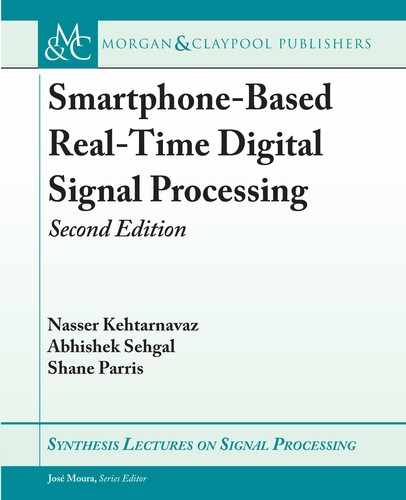
22 2. ANDROID SOFTWARE DEVELOPMENT TOOLS
In the next page, a list of Android release versions appear. At the ABI column, “Armeabi-
v7a” select ABI. If you are not able to see the option “Armeabi-v7a,” switch tab to “Other
Images,” and download Lollipop Android 5.1 Armeabi-v7a.
For compatibility with smartphones released within the last two years, it is suggested to
select the Target as the latest available version with the CPU/ABI as ARM (armeabi-v7a). You
should now be able to create the AVD by clicking Finish. Select the AVD you just created in
the list of devices (see Figure 2.13). Go to the AVD Manager from Tools, then select last column
Action. Click Launch and wait for the AVD to boot (see Figure 2.14). Once the AVD launches,
unlock the screen and get rid of the greeting message (see Figure 2.15). To run the Android
emulator faster, Quick Boot can be used. Note that, for the first time, the emulator needs to be
run using Cold Boot. By using Quick Boot for subsequent starts, the latest state is stored and
used for future starts. is feature is set as default (see Figure 2.16).
Figure 2.13: AVD setting.

2.1. INSTALLATION STEPS 23
Figure 2.14: AVD booting.
Figure 2.15: AVD appearance.

24 2. ANDROID SOFTWARE DEVELOPMENT TOOLS
Figure 2.16: Quick boot.
2.1.6 ANDROID STUDIO SETUP FOR MAC
For Mac OS installation, the following softwares need to be installed: Xcode, Java Develop-
ment Kit ( JDK), Android Studio Development Bundle, and Android Native Development Kit
(NDK). Xcode can be downloaded from the following link:
https://developer.apple.com/xcode/download/
Set the environment variable ANDROID_HOME to your Android SDK location. e
correct syntax for setting your environment variable is:
export ANDROID_HOME=<path to SDK>/android/sdk
..................Content has been hidden....................
You can't read the all page of ebook, please click here login for view all page.
